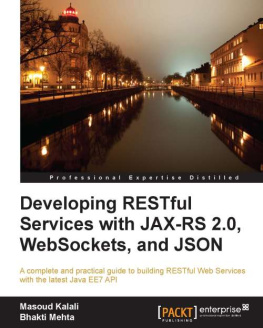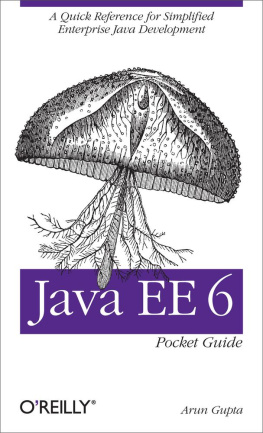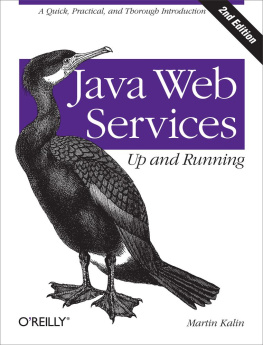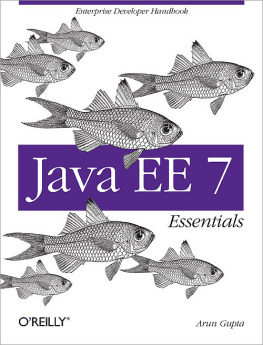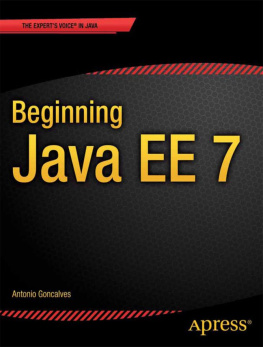Mario-Leander Reimer [Mario-Leander Reimer] - Building RESTful Web Services with Java EE 8
Here you can read online Mario-Leander Reimer [Mario-Leander Reimer] - Building RESTful Web Services with Java EE 8 full text of the book (entire story) in english for free. Download pdf and epub, get meaning, cover and reviews about this ebook. year: 2018, publisher: Packt Publishing, genre: Home and family. Description of the work, (preface) as well as reviews are available. Best literature library LitArk.com created for fans of good reading and offers a wide selection of genres:
Romance novel
Science fiction
Adventure
Detective
Science
History
Home and family
Prose
Art
Politics
Computer
Non-fiction
Religion
Business
Children
Humor
Choose a favorite category and find really read worthwhile books. Enjoy immersion in the world of imagination, feel the emotions of the characters or learn something new for yourself, make an fascinating discovery.
- Book:Building RESTful Web Services with Java EE 8
- Author:
- Publisher:Packt Publishing
- Genre:
- Year:2018
- Rating:5 / 5
- Favourites:Add to favourites
- Your mark:
Building RESTful Web Services with Java EE 8: summary, description and annotation
We offer to read an annotation, description, summary or preface (depends on what the author of the book "Building RESTful Web Services with Java EE 8" wrote himself). If you haven't found the necessary information about the book — write in the comments, we will try to find it.
Learn the fundamentals of Java EE 8 APIs to build effective web services
Key Features- Design modern and stylish web services with Java EE APIs
- Secure your web services with JSON Web Tokens
- Explore the advanced concepts of RESTful web services and the JAX-RS API
Java Enterprise Edition is one of the leading application programming platforms for enterprise Java development. With Java EE 8 finally released and the first application servers now available, it is time to take a closer look at how to develop modern and lightweight web services with the latest API additions and improvements.
Building RESTful Web Services with Java EE 8 is a comprehensive guide that will show you how to develop state-of-the-art RESTful web services with the latest Java EE 8 APIs. You will begin with an overview of Java EE 8 and the latest API additions and improvements. You will then delve into the details of implementing synchronous RESTful web services and clients with JAX-RS. Next up, you will learn about the specifics of data binding and content marshalling using the JSON-B 1.0 and JSON-P 1.1 APIs.
This book also guides you in leveraging the power of asynchronous APIs on the server and client side, and you will learn to use server-sent events (SSEs) for push communication. The final section covers advanced web service topics such as validation, JWT security, and diagnosability.
By the end of this book, you will have implemented several working web services and have a thorough understanding of the Java EE 8 APIs required for lightweight web service development.
What you will learn- Dive into the latest Java EE 8 APIs relevant for developing web services
- Use the new JSON-B APIs for easy data binding
- Understand how JSON-P API can be used for flexible processing
- Implement synchronous and asynchronous JAX-RS clients
- Use server-sent events to implement server-side code
- Secure Java EE 8 web services with JSON Web Tokens
If youre a Java developer who wants to learn how to implement web services using the latest Java EE 8 APIs, this book is for you. Though no prior knowledge of Java EE 8 is required, experience with a previous Java EE version will be beneficial.
Downloading the example code for this book You can download the example code files for all Packt books you have purchased from your account at http://www.PacktPub.com. If you purchased this book elsewhere, you can visit http://www.PacktPub.com/support and register to have the files e-mailed directly to you.
Mario-Leander Reimer [Mario-Leander Reimer]: author's other books
Who wrote Building RESTful Web Services with Java EE 8? Find out the surname, the name of the author of the book and a list of all author's works by series.

![Mario-Leander Reimer [Mario-Leander Reimer] Building RESTful Web Services with Java EE 8](/uploads/posts/book/119360/thumbs/mario-leander-reimer-mario-leander-reimer.jpg)
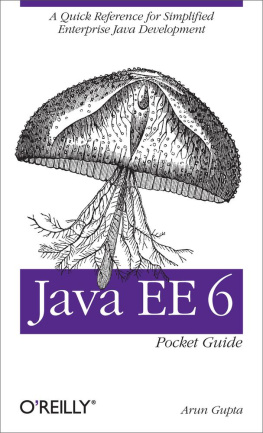

![Elder Moraes [Elder Moraes] - Java EE 8 Cookbook](/uploads/posts/book/119370/thumbs/elder-moraes-elder-moraes-java-ee-8-cookbook.jpg)
